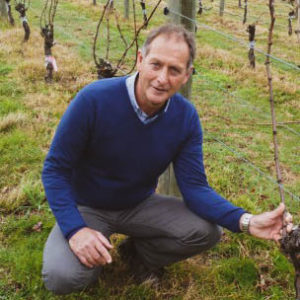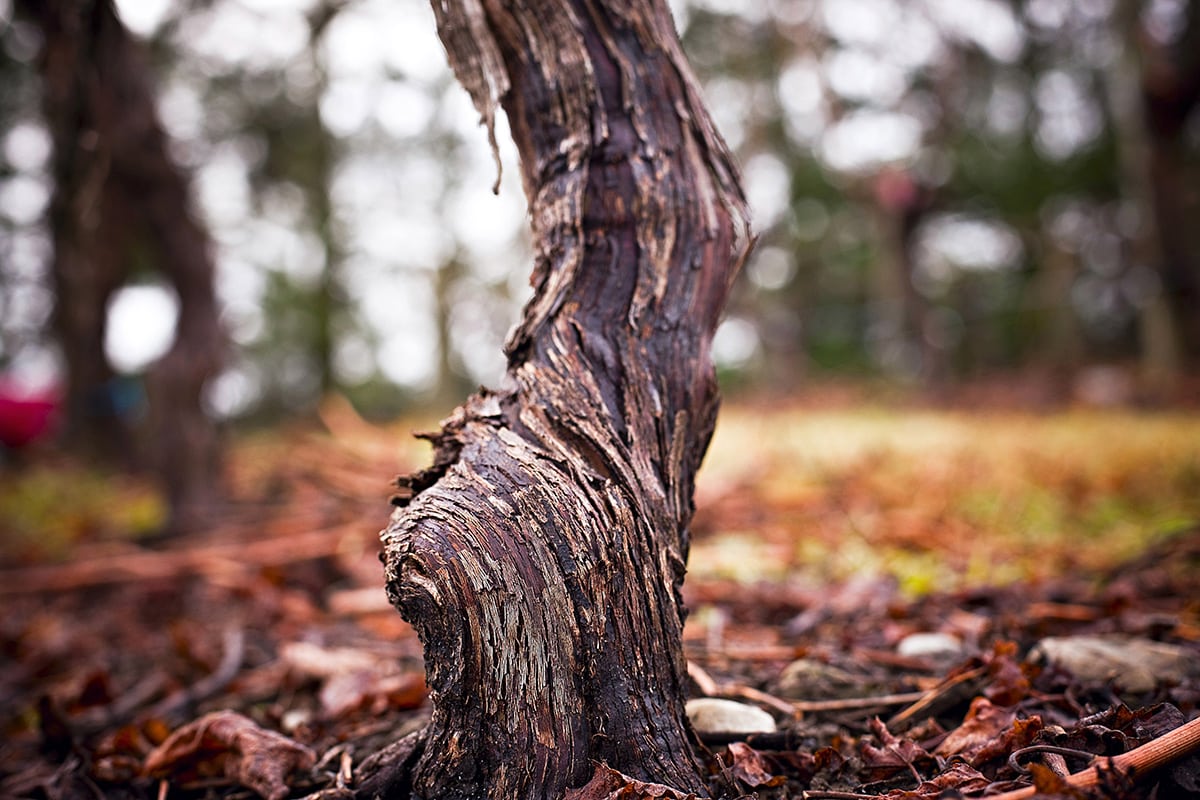Written by Sophie Preece
 Nick Hoskins has spent more than seven years racking up ‘IOUs’ in Hawke’s Bay and Marlborough, forging a holistic view of winegrowing.
Nick Hoskins has spent more than seven years racking up ‘IOUs’ in Hawke’s Bay and Marlborough, forging a holistic view of winegrowing.
“We measured in the vines, on the vines and under the vines,” says the man leading the New Zealand wine industry’s multi-faceted and globally significant Vineyard Ecosystems Programme.
His IOU is a simple explanation for a complex project that scrutinised more than 24 contemporary (using herbicide) and future (no herbicide) sites across Hawke’s Bay and Marlborough, to better understand the myriad relationships between micro-organisms, water, cover crops, vines, pests and diseases.
Between 2015 and 2022 more than 40 scientists, researchers and PhD candidates from seven research agencies – including soil chemists, plant psychologists and statisticians – researched the likes of trunk disease (in the vines); vigour, yield, and pest and disease outcomes (on the vines); and soil microbiology and elemental chemistry (under the vines).
“Basically measuring what we are doing and the impact of our activities,” says Nick, posing the three questions at the heart of the programme: “Does our management make a difference to the soil? Can we improve vineyard longevity? And can we use less chemical intervention?”
That’s meant hundreds of soil samples, yield assessments, pest and disease assessments, vine vigour analyses, mealy bug counts, and “quite a big piece of work on plant species undervine and interrow”, says Nick. “We also surveyed each of the vineyards involved about the management practices during the year.”
Samples went to the University of Auckland for DNA sequencing and data crunching, enabling the lead scientists at the university and Plant & Food Research to build a picture of New Zealand Vineyards in, on and under the vines.
That rewards the scientists doing the research as well as the growers who’ve helped pay for it, and is important for the reputation of New Zealand wine in a market wary of greenwashing, says Nick. “We have to provide evidence of our sustainability… Which to me is a key outcome.”
A huge amount of research was presented by more than 25 scientists and practitioners at the Beyond Vineyard Ecosystems: Growing for the Future technical conference in Christchurch in late September. However, several key findings have already been disseminated via research events like Grape Days and New Zealand Winegrowers (NZW) fact sheets, says Nick, emphasising the importance of getting the work into the hands of growers to inform better management practices.
They include work showing that while yields were lower in vineyards not using herbicide, the use of one herbicide only has no effect on yields. The programme also found that powdery mildew can be controlled without the use of synthetic fungicides, “but you have to work a bit harder and pay attention to your spray programme”, says Nick. When it comes to mealybug and the spread of virus in vineyards, blocks not using synthetic insecticides “were as good if not better than those using these products”.
Ensuring the outcomes are practical and pertinent to growers has been key, and has seen some of the project parameters shift to account for the latest informatin, says Nick. As an example, trials revealed that foliar symptoms of trunk disease were not a good predictor of vine deaths, so researchers adapted their work to use other indicators – such as vineyard gaps obtained through a bird’s eye view, and ground truthing vine deaths in blocks – to better forecast the impact and trajectory of the disease.
The efficacy of pruning wound protection was established via the research, and immediately shared with growers. Meanwhile, a growing recognition of the scale of trunk disease in New Zealand vineyards led to another shift in the programme design, with remedial surgery added to the project, offering growers confidence that most re-trunked vines will produce a new trunk within a year and return to typical yields within two harvests, says Nick. “It’s something they can do now without replanting their vineyard.” Bragato Research Institute (BRI) Project Manager Stephanie Flores, who worked with Nick to design and organise the Beyond Vineyard Ecosystems conference, says it was vital to have someone able to straddle science and industry imperatives heading the project. “Nick has been central to all of this for years and a leading voice of growers in a ‘mind field’ of scientists.”
Speaking at Grape Days in June, Nick briefly outlined some of the outcomes, including work by Dr Brent Clothier on “parsimonious” water use and low-level leaching on the vineyards assessed. He also outlined findings on soil biodiversity from contemporary to future sites, with soil samples taken at budburst, veraison and harvest, then DNA sequenced.
That work provided counts of specific bacteria and fungi, as well as the insects and worms in the samples, and revealed measurable but small differences in soil biodiversity and soil elemental chemistry between those using and not using herbicides. Nick emphasises that the results are not a licence for complacency. “I don’t want people to get the wrong message, that we are doing okay and don’t need to worry about it, because the rest of the world is moving on as well.”
Meanwhile, there remains a rich reservoir of untapped information from the programme, including abundant data on fungi and bacteria, available for future analysis as the roles of specific organisms in the vineyard ecosystem are revealed, Nick says.
If Grape Days was the opportunity for a “speed dating” interaction with the results, as Nick described it on the day, the conference was two days of in-depth analysis. “The Beyond Vineyard Ecosystems event will delve into today’s pressing issues for vineyard sustainability, from soil health and water use to reducing our industry’s reliance on agrichemicals,” said BRI Chief Executive Jeffrey Clarke in the lead-up to the event. “We are looking forward to having a national conversation about the future of winegrowing, sustainability and how industry research can play its part.”
The Vineyard Ecosystems programme has accelerated understanding of plant protection, with many growers involved in the programme now moving to more sustainable practices and ready to share their stories. “The most powerful tool we have to communicate research is growers talking to other growers,” says Jeffrey. “One viticulturist used the programme’s data to bring a business case to his board for better plant protection, while another has found that practices in his organic vineyards provide solutions in his conventional vineyards. This two-day event is about sharing this knowledge and learning where the next wave of research can take us.”
Nick says that as well as highlighting programme learnings, the event was to frame this “world-leading” research in an international context. While other research programmes have looked at the relationship between what’s in, on and under the vines, none have taken such a comprehensive approach, he says.
And it’s certainly timely to be “rethinking chemistry” and measuring eco-credentials, because the market is demanding just that, says Nick. “We can be sure what we are doing now we won’t be doing in 10 years’ time.”

















